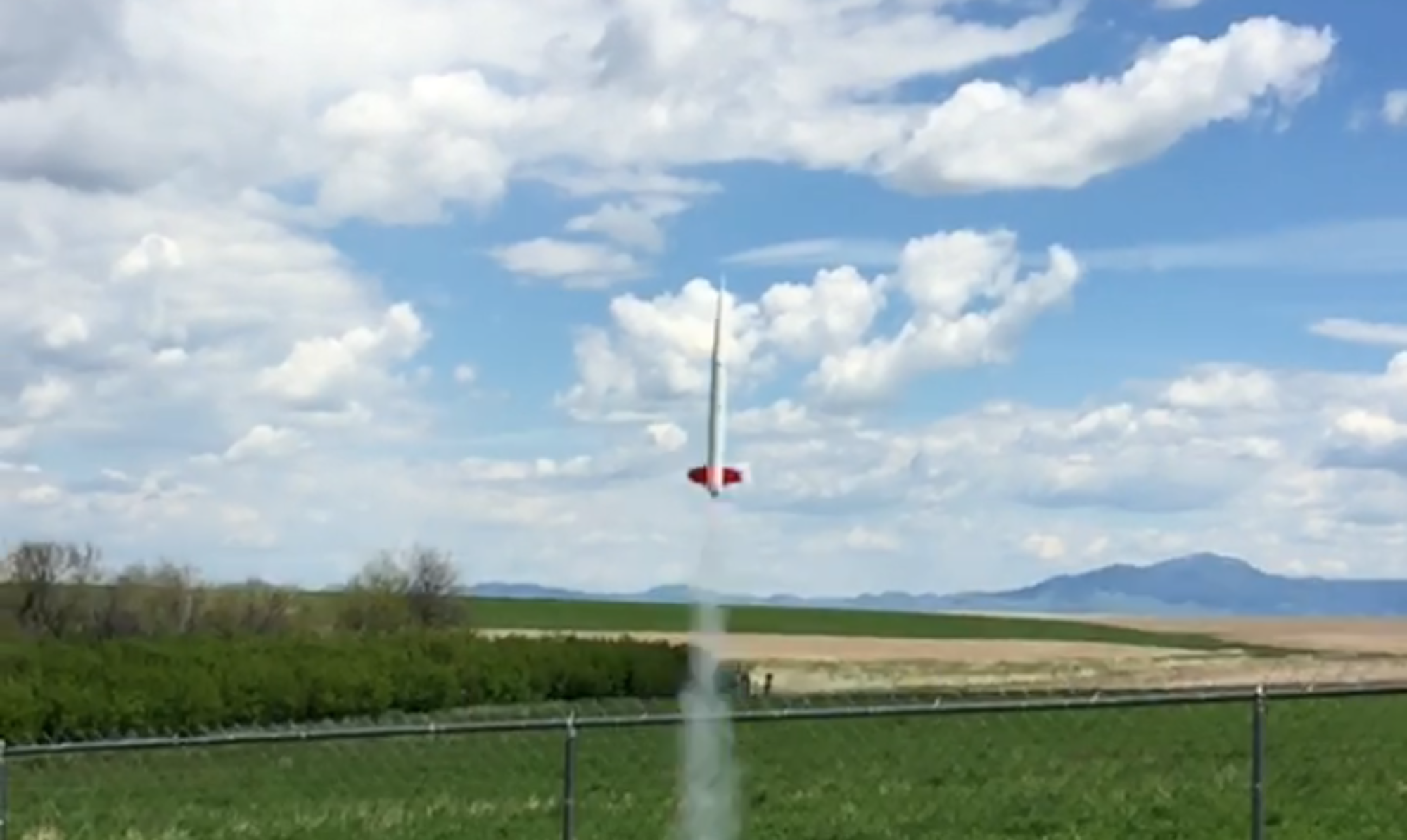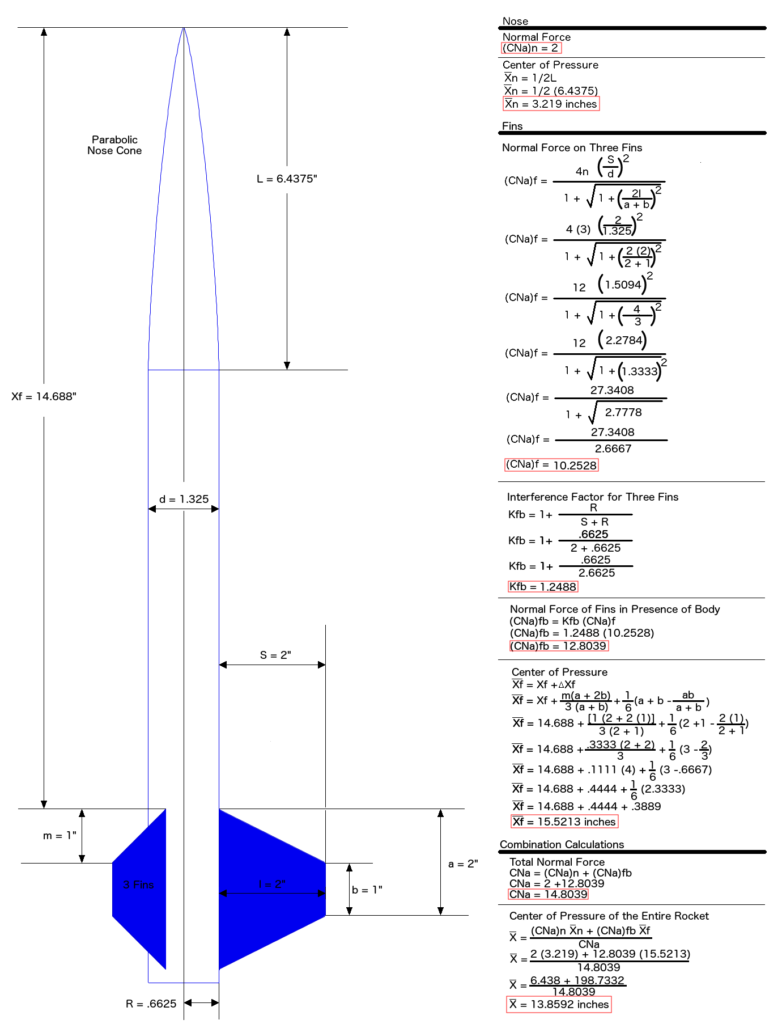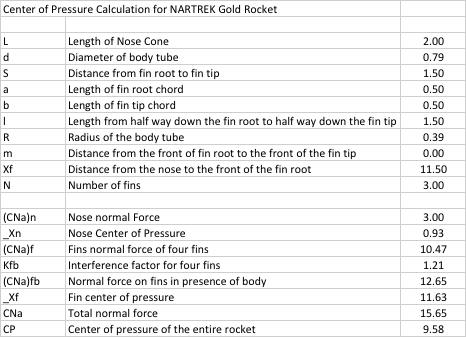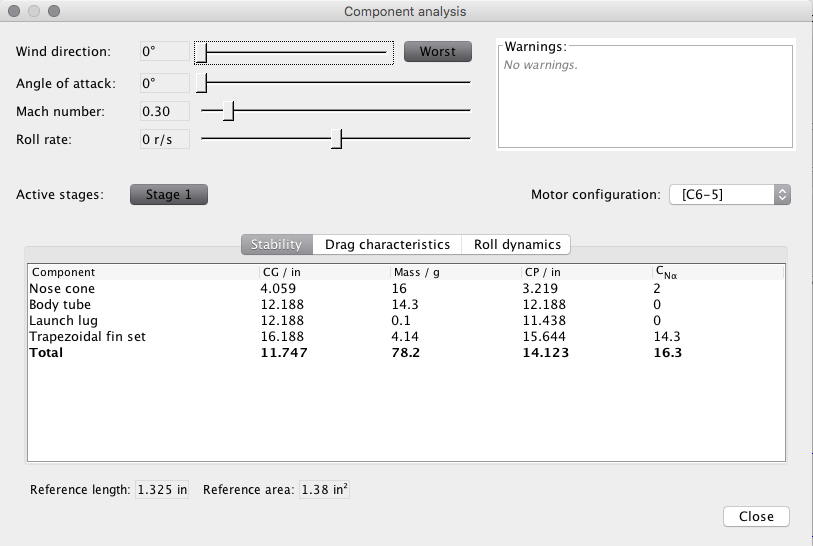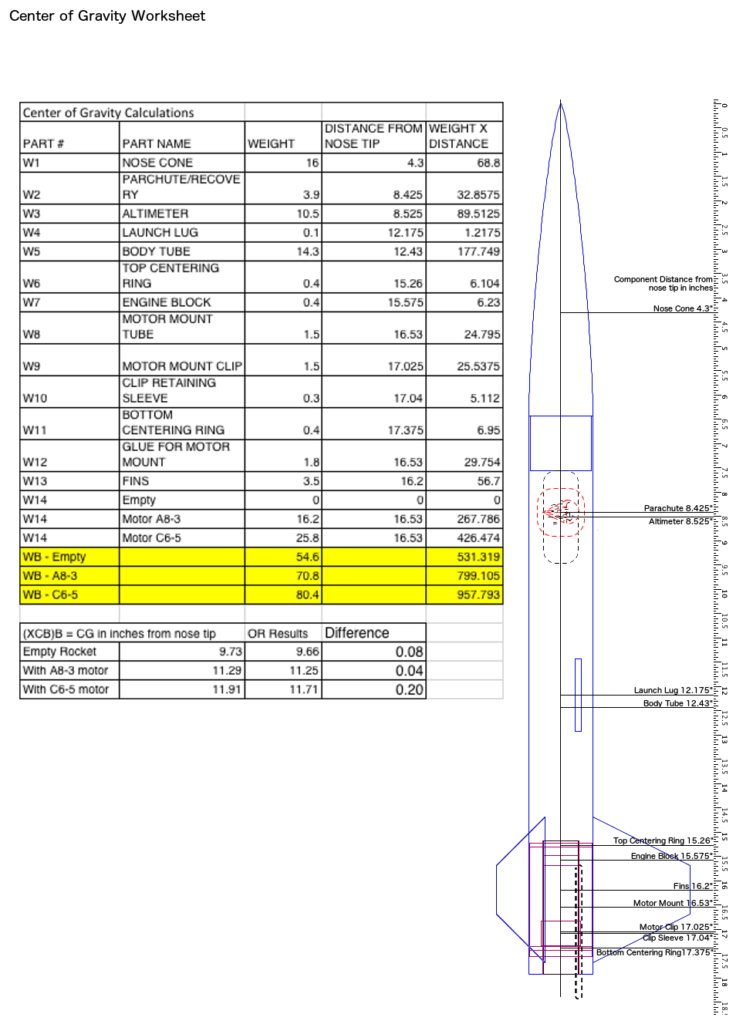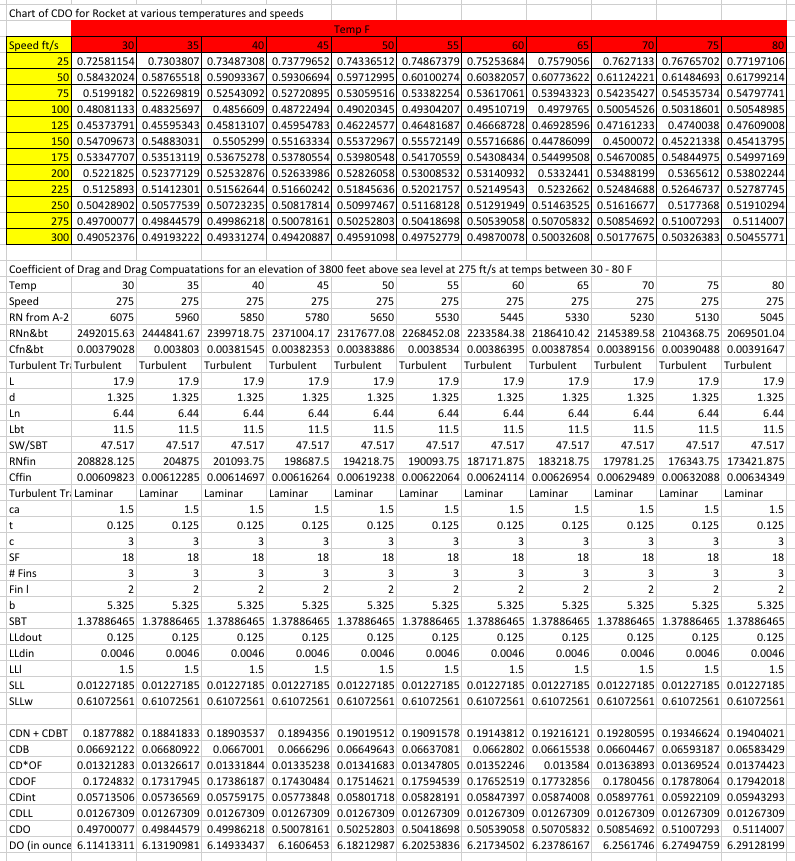
This page will chronicle the progress through the National Association of Rocketry’s NARTREK Gold Achievement program.
In order to successfully complete this program, the following requirements must be met:
1. Design your own model rocket. It may be a sport, contest or payload model. Compute the Center of Pressure (CP) using the Barrowman Method (His original NARAM-8 report can be found here, and is also covered in Centuri Reports TIR-30 and TIR-33) or calculate the CP using one of the available computer programs. Estimate the Center of Gravity of your model with the largest expected rocket motor installed. Evaluate the static stability of your model. Compute the predicted altitude of your design, assuming various drag coefficients (CD). You may do this using the Centuri Report TIR-100 or Estes TR-10 (missing page TR-10_Fig 9B) and TR-11, or you may use one of the commercially available or freeware programs available on the Internet.
2. Build and fly your rocket design. Determine the altitude to which it flies by using standard tracking system methods or by use of an on-board altimeter. You may also use a stop-watch and the drop-streamer method described in Handbook of Model Rocketry, Chapter 17, by G. Harry Stine. Make at least three (3) flights with each of at least two (2) types of motors and compute the average altitude achieved for each motor type. This is a minimum of at least six (6) flights. Using this data and your previous flight performance calculations, estimate the actual drag coefficient of your model. Record the flight information and the results of your calculations on the Flight summary Sheet that came with your Gold packet. Be sure to complete the comparison of predicted to actual performance.
3. Submit the Requirement Certification sheet completely filled out. Take a photograph of your model and attach it to the certification sheet. Also attach a dimensioned drawing of your model showing all dimensions necessary to allow someone else to build your design from this drawing. Attach the center of pressure calculations, flight performance calculations, and flight performance data for your design.
As with most of the NARTREK sections, I started off with a great idea of how to complete this section, then ran into hangups that required a switch of direction mid project. In this case, I started with a rocket based off of the Estes Viking but with modified body tube and fin design. Although the rocket was stable, and the completed models flew without any issues, the body tube was too small to accommodate an altimeter and I wasn’t able to get a good result using a streamer drop (likely because of the cold weather at the time of launch), so I decided to go back to the drawing board and design a larger rocket capable of containing the altimeter.
While considering options, I came across an old Estes Helio-Coptor kit given to me by a family member who’s son had never built it. The body tube had been crushed on one end at some point, but there were still 11.5 inches of usable tube left and the nose cone, engine mount, and other components were all in decent shape. After chopping the tube, I measured and weighed all of the components and ended up with the following dimensioned drawing of the model.
Dimensioned drawing of the model design.
Calculation of the Center of Pressure of my design.
Although it wasn’t required to complete this level, I decided to do all of the math by hand. Using the Barrowman method described in Centuri Report TIR-33, I arrived at a Center of Pressure location 13.85 inches from the tip of the nose. The following graphic shows my work:
Having built an Openrocket file, NARTREK Gold Rocket v2.ork, for this rocket, I noticed that the CP location was slightly different in the Openrocket simulation with Openrocket showing it .26 inches further back. In reviewing the component analysis used by Openrocket, I found that the difference between the two was caused by a different result in the Fin computations, namely Normal Force of Fins in Presence of Body (CNa)fb where OR had 14.3 and I came up with 12.8. When using the OR number for the fin’s CP computation, I then got the same result. I reviewed my math for the Kfb and (CNa)fb sections of the Barrowman equations, and my math appears to be correct, so I’m unsure why the difference, but even using my more conservative result, the stability is still at 1.52 cal with a C6-5 motor.
Center of Gravity measurements and stability calculations.
The center of gravity per my calculations came out at 9.73″ from the tip. The simulation in OR was 9.655 for a difference in .08″. Adding a A8-3 motor, the CG move to 11.30, with OR showing 11.24″. Adding in a C6-5 motor, the CG moved to 11.75″, with OR showing 11.71 for a difference of .04″.
Stability Calculations
Calculated altitude performance of the model assuming different values of drag coefficient.
Actual altitude performance data, recorded on the Flight Summary Sheet.
–
A description of the method(s) used to obtain altitude measurements.
–
Determination of the probable drag coefficient using flight data compared against calculated performance data.
–
Photograph of the completed model.
–
NARTREK Gold Rocket v2 Landscape
